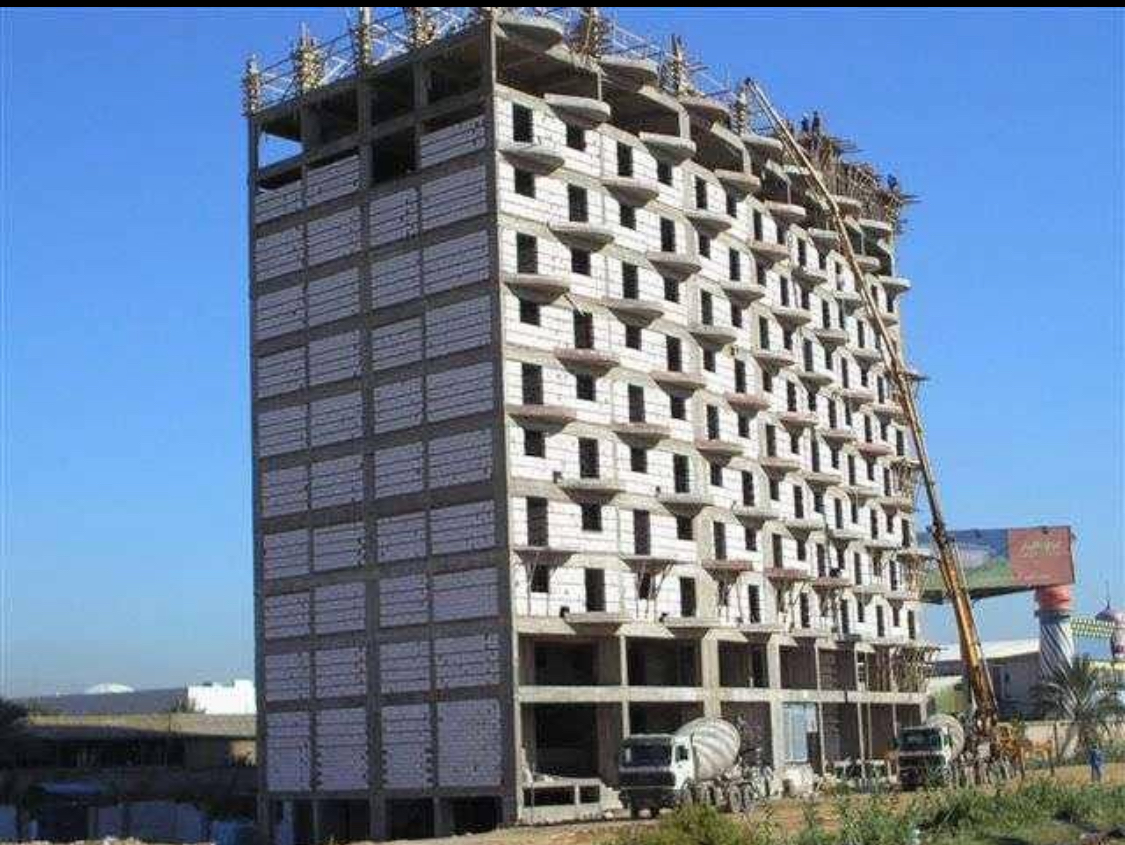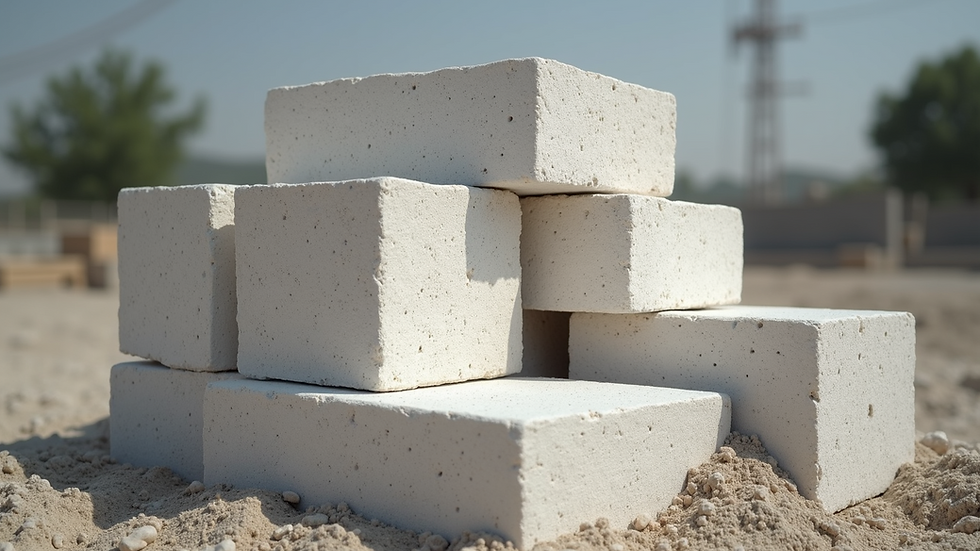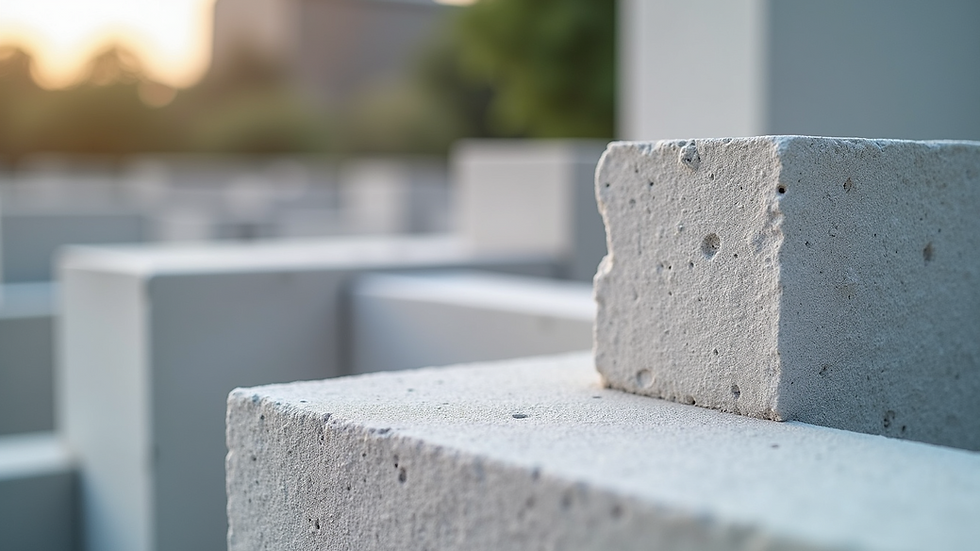Why Choose Siporex Lightweight Blocks for Modern Building
- Siporex Saudi

- Jul 12
- 4 min read
The construction industry is evolving rapidly, and builders are constantly on the lookout for materials that combine durability, sustainability, and cost-effectiveness. Among these modern materials, lightweight siporex materials stand out due to their numerous advantages. In this blog post, we will explore why these materials are becoming a preferred choice for architects and builders globally.
Understanding Lightweight Siporex Materials
Lightweight siporex materials, also known as aerated concrete blocks, are a type of concrete building material made by mixing cement, lime, silica, and water with aerating agents. This combination leads to a lightweight structure that retains the strength and durability of traditional concrete. A notable benefit is that these blocks are easy to handle, reducing labor costs and construction time.
For instance, siporex blocks typically weigh significantly less than traditional concrete blocks, making transportation and installation quicker and more efficient. This weight advantage allows for fewer trips to and from the construction site, thus saving energy and lowering costs.

Advantages of Using Lightweight Siporex Materials
Durability and Strength
One of the most compelling reasons to choose lightweight siporex materials is their durability. Despite being lighter than conventional concrete blocks, they demonstrate impressive compressive strength. This makes them suitable for a variety of structural applications, including load-bearing walls.
Furthermore, their resistance to moisture and fire enhances the longevity and safety of buildings. Buildings constructed with siporex lightweight blocks can resist fire for up to three hours, offering peace of mind in case of emergency situations.
Thermal Insulation Properties
Another significant advantage of siporex lightweight blocks is their excellent thermal insulation properties. The porous nature of these blocks allows them to minimize heat transfer, keeping buildings cooler in summer and warmer in winter.
According to studies, using siporex blocks can lead to a 30-40% reduction in energy consumption for heating and cooling. This characteristic makes them a perfect choice for eco-friendly building designs that aim to reduce carbon footprints and operational costs.
Sound Insulation
In addition to thermal insulation, siporex lightweight blocks provide effective sound insulation. This is particularly beneficial in urban environments where noise pollution is a concern. Buildings made with these blocks can create a quieter and more peaceful living or working environment.
For instance, residential buildings using siporex blocks can significantly reduce sound transmission between units, contributing to improved privacy and comfort for residents.

What are Lightweight Blocks Used For?
Lightweight blocks, particularly siporex lightweight blocks, are versatile in their applications. Builders use them in various constructions, including:
Residential Buildings: The blocks are commonly used for walls, partitions, and roofing elements in homes.
Commercial Structures: Shopping malls, offices, and hotels utilize lightweight siporex blocks for their strength and insulation properties.
Infrastructure Projects: Schools, hospitals, and other public buildings can benefit from the lightweight nature combined with durability.
Moreover, the speed of installation associated with siporex lightweight blocks enables quicker project completion, meeting tight deadlines without compromising quality.
Cost-Effectiveness
Cost is always a crucial factor in construction. Lightweight siporex blocks, while comparable in price to traditional masonry materials, can lead to overall savings in the construction process. The lightweight nature translates to reduced transportation costs, and their fast installation means labor costs are kept lower.
Moreover, the improved energy efficiency translates into longer-term savings on energy bills, making these blocks an economical solution in more ways than one.
Sustainability of Lightweight Siporex Materials
As awareness grows regarding environmental issues, sustainable building materials have become increasingly important. Siporex lightweight blocks are not only made from non-toxic materials but also contribute to energy conservation.
Because they improve heating and cooling efficiency in buildings, siporex blocks help reduce reliance on non-renewable energy sources. Furthermore, the manufacturing process of these materials typically generates lower carbon emissions compared to traditional cement production methods.
By choosing siporex lightweight blocks, builders can contribute to eco-friendly construction practices, appealing to environmentally-conscious clients.

Applications in Modern Architecture
The adaptability of lightweight siporex materials makes them excellent for modern architectural designs. Architects appreciate the potential for creativity with these blocks, as they can be easily shaped and modified to suit various design requirements.
For instance, the blocks can be cut, drilled, and molded without specialized tools, allowing for intricate designs that might be difficult with more rigid materials. Additionally, the structural integrity of light siporex blocks reduces the need for excessive reinforcement, freeing up design possibilities.
Case Studies
Many projects around the world have successfully employed lightweight siporex materials, showcasing the effectiveness of these blocks. For example, numerous residential units in urban areas have adopted siporex blocks due to their quick installation and energy efficiency.
Similarly, large commercial buildings have utilized siporex to achieve both aesthetic appeal and functional benefits. The flexibility and reliability of these materials result in structures that not only look impressive but also perform exceptionally well.
Final Thoughts on Lightweight Siporex Materials
In summary, the decision to use lightweight siporex materials can significantly impact modern building projects. The benefits of durability, thermal and sound insulation, cost savings, and sustainability make them a wise choice for builders and architects alike.
As the construction industry continues to evolve, incorporating innovative materials like siporex lightweight blocks paves the way for buildings that are not just functional but also environmentally responsible and aesthetically pleasing. Embracing these materials could be a step toward a smarter construction future.
For more information on how you can incorporate siporex lightweight blocks into your building projects, consider researching local suppliers or contacting manufacturers for detailed specifications and recommendations.



Comments